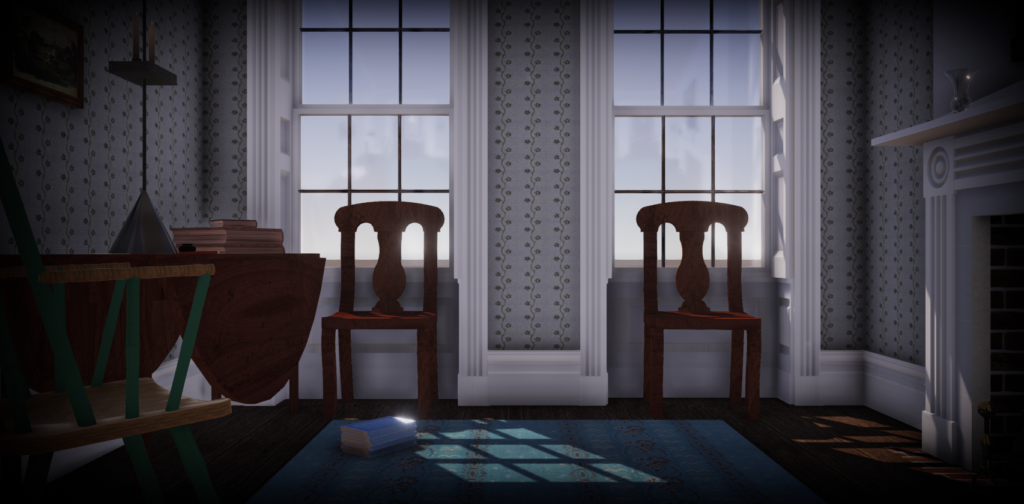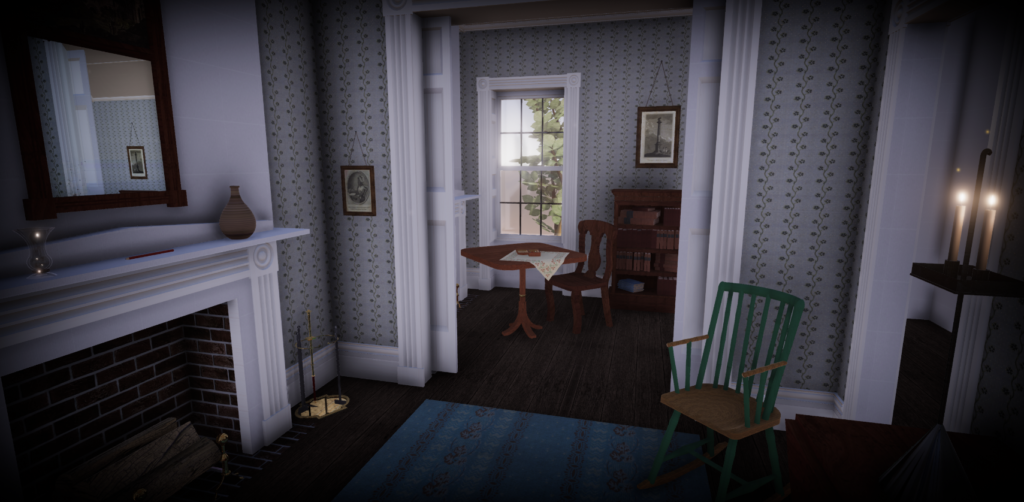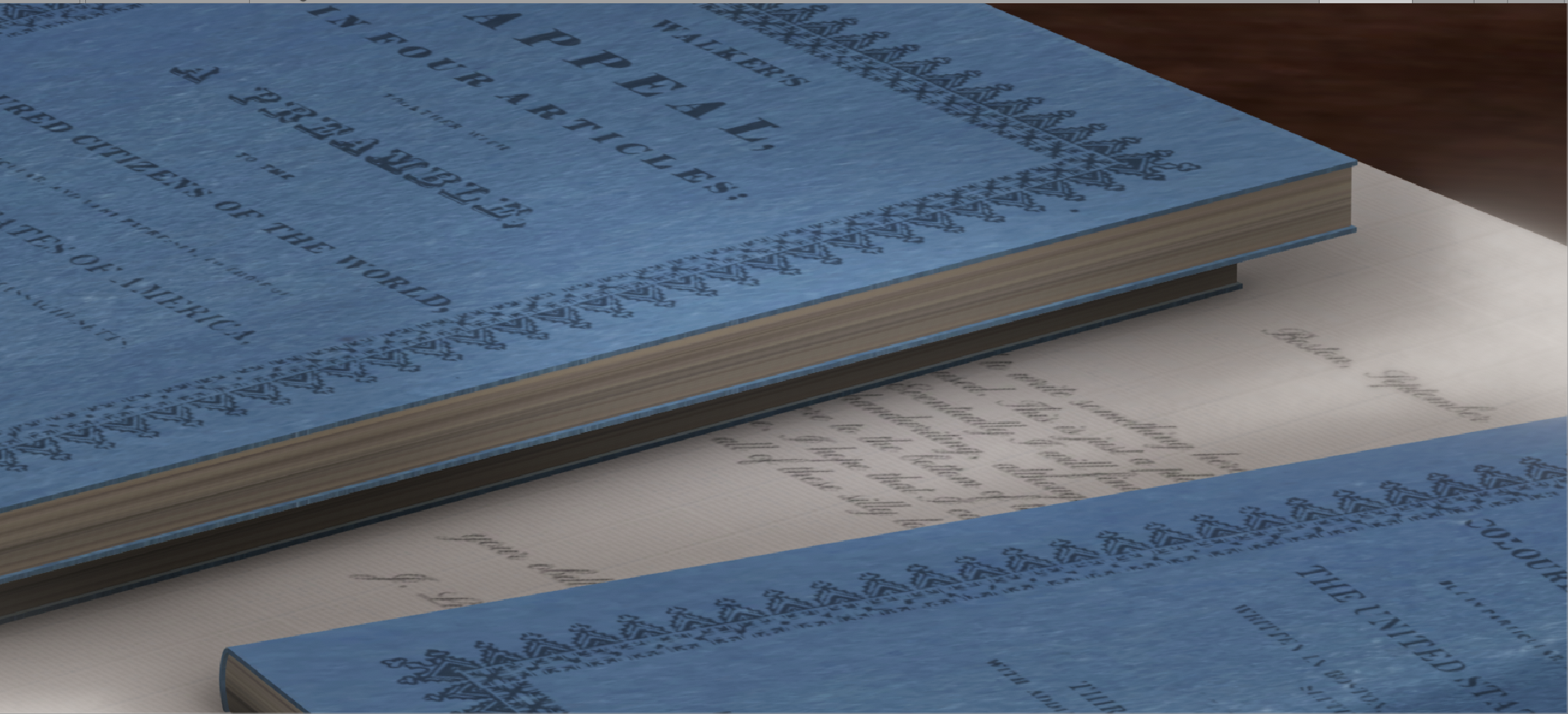So now that we’ve gotten through two presentations, it’s time for some screenshots. The team presented at the Association for the Computers and the Humanities last week. Today we gave a presentation for folks at Northeastern. I am biased, but I think the students on the team are doing an incredible job navigating issues related to research and the technology, as well as presenting their experiences in clear and compelling ways. For the latter presentation, I turned VR on for a build-in-progress, and we pushed the Oculus view to Microsoft Teams. Trying to get VR headsets to play nice with various remote/pandemic contingencies has a particularly tricky part of this project. We’ve been building the project since March (including training!) and I think this aspect has slowed us down a little. I nonetheless think we’ve gotten a lot done despite the circumstances.
Anyway, it’s always weird showing a historical 3D reconstruction in progress, because the decisions we make today might not be the decisions we make tomorrow. We conducted an initial survey of source material at the beginning of the project, but it’s almost impossible to anticipate all the little details up front — sometimes we realize we have to go back to the archives when we’re building a texture or trying to figure out what is typical or appropriate at 8 Belknap Street.

For example, none of us are satisfied with the wallpaper in this render despite extensive wallpaper research. We know that David Walker was renting a house erected in the mid 1820s, and we all think that wallpaper was probably up in the parlor, if up at all, and would probably date to that time period. We’ve been scouring digitized databases for examples and some archivists and librarians have been sending us samples of books bound in wallpaper to understand the range of what was available. So the students are still thinking about what this should look like — but what to do in the meantime? Not assigning wallpaper to the walls is also an interpretive choice. I think we opted for period-inspired paper as a placeholder to communicate that wallpaper should go here. This is why we think it’s so important to make our decisions public-facing. We’ll have some student-written blogs up soon that explain choices specific to certain objects. By the time the project is ready for public consumption, we hope to have a permanent feature on the site that links individual objects to the sources that underpinned their creation.

Anyway, we have several more rooms to populate with objects that need to be revised in small ways. There are wonky reflection probes that are driving me bonkers even after spending hours trying to sort them out for these presentations. But most importantly we have to work through what sets of objects and spaces are going to tell the most meaningful stories about David Walker within the 8 Belknap Street build. This curatorial work is crucial for making this more than just a lovely model of a nineteenth-century home.
